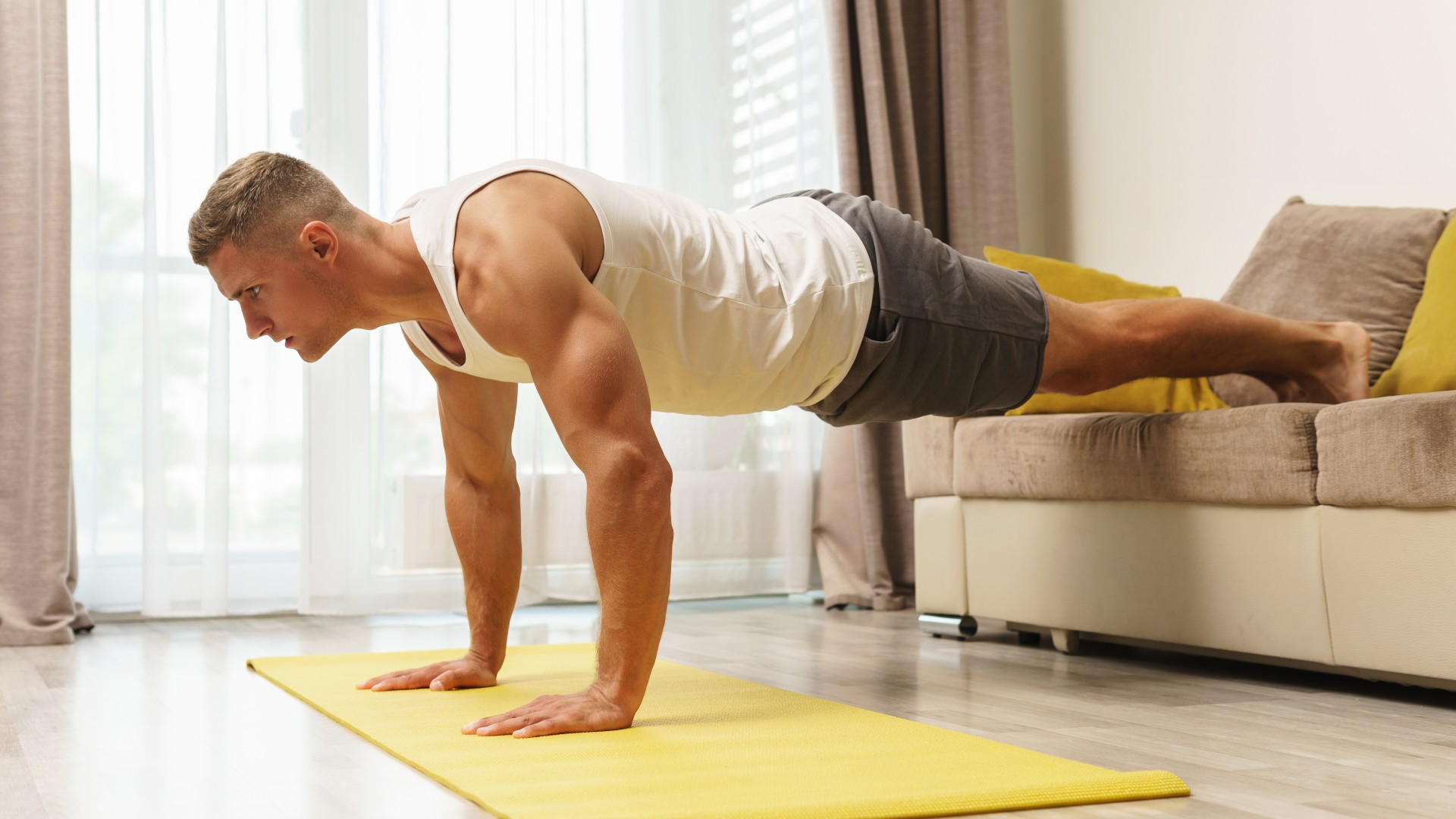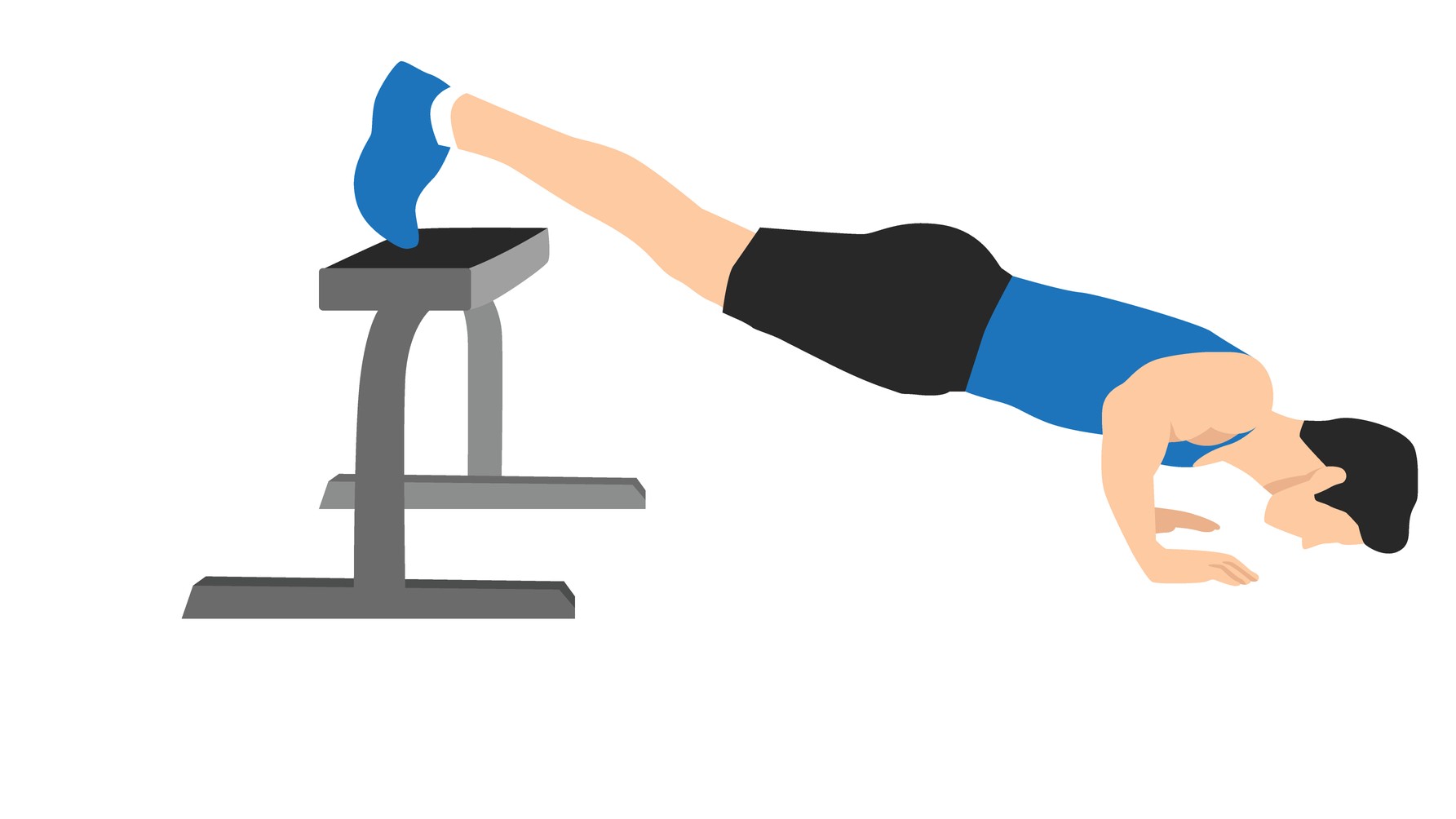Ready for a challenge? I'm a personal trainer, and this 90-rep decline push-up workout will test upper-body strength in just 9 minutes

What if I told you that you could torch your upper body in just nine minutes — if you’re prepared to try 90 reps of decline push-ups against the clock. This upper-body strength challenge will fatigue your shoulders, triceps, and pectoral muscles, all while working your core.
The humble push-up is a bodyweight exercise that builds upper-body strength, targeting the front of the body — specifically, your chest and anterior deltoids — with assistance from your arms and core muscles. It also develops your pushing power. Decline push-ups dial up the intensity even further by elevating your feet above shoulder level.
If you’ve got standard push-ups in the bank, try this 90-rep decline push-up challenge and test yourself against a timer.
How to do decline push-ups
Not to be confused with the deficit push-up, the decline push-up elevates your feet rather than your hands. You can use an exercise ball for your feet, or a box or bench. This front-loads the body and increases the emphasis on your working muscles.
How:

- Place a box behind you, then position your feet on it hip-width apart, resting on the balls of your feet
- Walk your hands out into a push-up position with your hands beneath your shoulders
- Brace your core and give your glutes and quads a squeeze
- Bend your elbows and lower your chest to the ground
- Pause, then push upward and extend both arms.
The higher you elevate your feet, the harder the exercise becomes. Just make sure you don’t end up performing a shoulder press with your body vertical.
What is the decline push-up challenge?

EMOM:
Get instant access to breaking news, the hottest reviews, great deals and helpful tips.
Every minute on the minute, perform 10 decline push-ups, then rest until the next minute begins. Aim to complete the full 90 reps, totaling nine minutes.
- Minute 1: Perform 10 push-ups then rest
- Minute 2: Repeat
- Minute 3: If it's too difficult, adjust your reps and remain consistent for the remaining rounds
- Minute 4: At this stage, if it's too easy, move to eccentric tempo (see more below).
Tips from a personal trainer
This might seem like a simple challenge, and, true, the format is. However, 90 is a lot of reps, and you will be against the clock. The timing doesn’t change, so your reps are likely going to take longer to complete, reducing your rest time as fatigue sets in. It’s easy to fall behind as a result.
Aim for at least 10 seconds of rest per round. If you cannot complete the full 10 reps every round, complete what you can with 10 to 15 seconds to spare for recovery before the next round.
The aim is to finish the full 90 reps, but most importantly, you want to be consistent. If that means finishing short of 90 but completing the same number of reps each round, that is more of a success in my books than starting at 10 and reducing the reps each round.
If you find the challenge too easy, introduce tempo training or Time Under Tension (TUT). During the eccentric (lowering) phase of the push-up, slow it down, then push upward with power. It'll take longer and increase the loading on your body, all without lifting a single weight.
Avoid dropping your hips, as this signals that you are not engaging your core properly. Also, try to avoid half or quarter reps — your chest should be fully lowering toward the floor.
Bodyweight upper body exercises are functional — think about how often you get up off the floor, open a door, or push something away from you. I’m an advocate for pushing and pulling your own weight properly before focusing on load or variations. Even adding a few sets of push-ups into your routine before you perform a bench press or overhead press helps prepare the bones, joints and muscles.
Give the challenge a go, and let us know how you get on.
Follow Tom's Guide on Google News to get our up-to-date news, how-tos, and reviews in your feeds. Make sure to click the Follow button.
More from Tom's Guide
- Personal trainer shares one simple exercise to strengthen your hips, build core stability and improve the L-sit
- Forget walking and swimming: This is the best exercise for staying fit after 55, according to new research
- Move over lunges — I teach weightlifting, and this is the strength exercise I'd use instead

Sam Hopes is a level 3 qualified trainer, a level 2 Reiki practitioner and fitness editor at Tom's Guide. She is also currently undertaking her Yoga For Athletes training course.
Sam has written for various fitness brands and websites over the years and has experience across brands at Future, such as Live Science, Fit&Well, Coach, and T3.
Having coached at fitness studios like F45 and Virgin Active and personal trained, Sam now primarily teaches outdoor bootcamps, bodyweight, calisthenics and kettlebells.
She also coaches mobility and flexibility classes several times a week and believes that true strength comes from a holistic approach to training your body.
Sam has completed two mixed doubles Hyrox competitions in London and the Netherlands and finished her first doubles attempt in 1:11.
You must confirm your public display name before commenting
Please logout and then login again, you will then be prompted to enter your display name.
